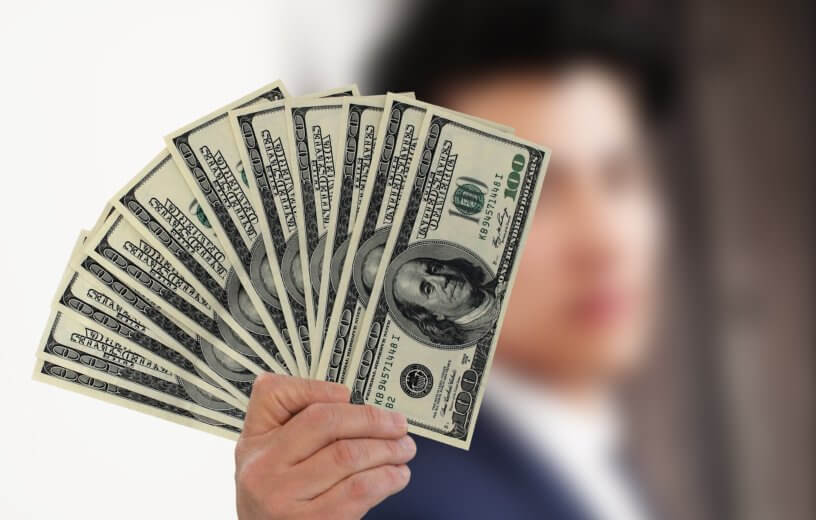New research shows that the top 0.1 percent are successful entrepreneurs and skilled professionals who make their income from human capital.
PRINCETON, N. J. — Which Americans are rolling in the most dough? Why, it’s those lazy millionaires counting their money in the confines of their mansions while everyone else is working, right? Wrong! A new study finds that income inequality has more to do with a different group of earners: the country’s “working rich.”
According to researchers from Princeton University, highly successful entrepreneurs and skilled professionals running their own businesses are among the top 0.1 percent of earners, with wages topping $1.6 million per year. The study shows that this group of high earners is composed of lawyers, physicians, financial professionals, car dealers and beverage distributors, all of whom make most of their income from human capital.
“We set out to understand what has been driving top incomes in recent years, and that upended some previous findings about the rich,” says co-author Owen Zidar, assistant professor of economics at Princeton University’s Woodrow Wilson School of Public and International Affairs, in a release. “People are earning a lot of dollars through private businesses, and that’s important evidence that should influence the debate around taxing millionaires.'”
Researchers studied 11 million firms between 2001 and 2014 — before the 2017 tax reform took place. They discovered that most of the top income earnings happen in “pass-through” businesses, that is, those businesses where profits and losses pass through the owners themselves. So, instead of paying corporate and dividend taxes that hit 55 percent, these businesses typically pay 11.6 percent less.
In their working paper, researchers explain how we got where we are today. Reagan-era tax reforms raised tax liabilities for corporations and lowered them for individuals. And while this was great for small businesses, it made the concept of the pass-through business more inviting to large business owners who were still able to take advantage of the system.
Researchers say the 2017 tax reform brought down taxes on qualifying pass-throughs. “It’s unclear which businesses qualify as a pass-through for the new deduction, as it’s been done in an ad hoc way. So, architecture and engineering firms receive the new 20 percent rate, while other service firms and consultancies do not,” explains Zidar. “It’s complicated in terms of who is eligible, but it’s now among the biggest tax breaks in the tax code.”
The study shows that the median number of owners for pass-through companies is two people, and these individuals are earning their peak income in their 50s. Researchers point out that these high incomes are not based on “idle ownership of financial assets.” For about 93 percent of these businesses, the owners are actively involved. But most do not get income from labor. Instead, 75 percent comes from human capital income. As an example, most income is produced by actively providing a service, but it can also be created because of the personal networking, reputation and recruitment abilities of entrepreneurs.
“It’s common to wonder whether business owners grew the pie, or simply extracted more money from workers,” says Zidar. “It looks like both are important, but growing the pie may be more significant.”
The lower tier of the working rich, or those in the top 1 to 0.1 percent, earn between $390,000 and $1.6 million a year and all own their own businesses — medical, professional, dental, technical, legal or specialized. Those earning more than $1.6 million include physicians, dentists, skilled professionals, financial investors, automobile dealers and oil and gas extractors.
Researchers wanted to know whether the owners were actually working, so they studied what happens when an owner dies or retires. In both cases, profits dropped by more than 80 percent and never recovered.
They found few situations in which top-earning businesses were passed along to other family members. Business owners in their 30s who make a million or more per year did not have parents in the 1 percent. So where did these young, successful entrepreneurs come from? Zidar is now focusing on this group for answers.
The authors say these findings bring to light what is often overlooked in discussions of income inequality. There is a whole class of rich entrepreneurs who benefit from the way money flows through in human capital income. The findings are a wake-up call for multiple revenue-related matters — the need for a more consistent business tax system, the need for more skilled workers and the need for better educational opportunities to generate the next generation of innovators and entrepreneurs.
“We show that if you look and decompose this income, a lot of it comes from these pass-through businesses, and that activity more closely resembles labor than the idle rich,” concludes Zidar. “Our results suggest that educating the country’s next generation of innovators may be more important than tax incentives.”
The working paper, “Capitalists in the Twenty-First Century,” was published Jan. 14, 2019 in the National Bureau of Economic Research (NBER). It is currently under peer review by the Quarterly Journal of Economics.
This article was sponsored by Qualified Small Business Stock (QSBS Exception) experts.
